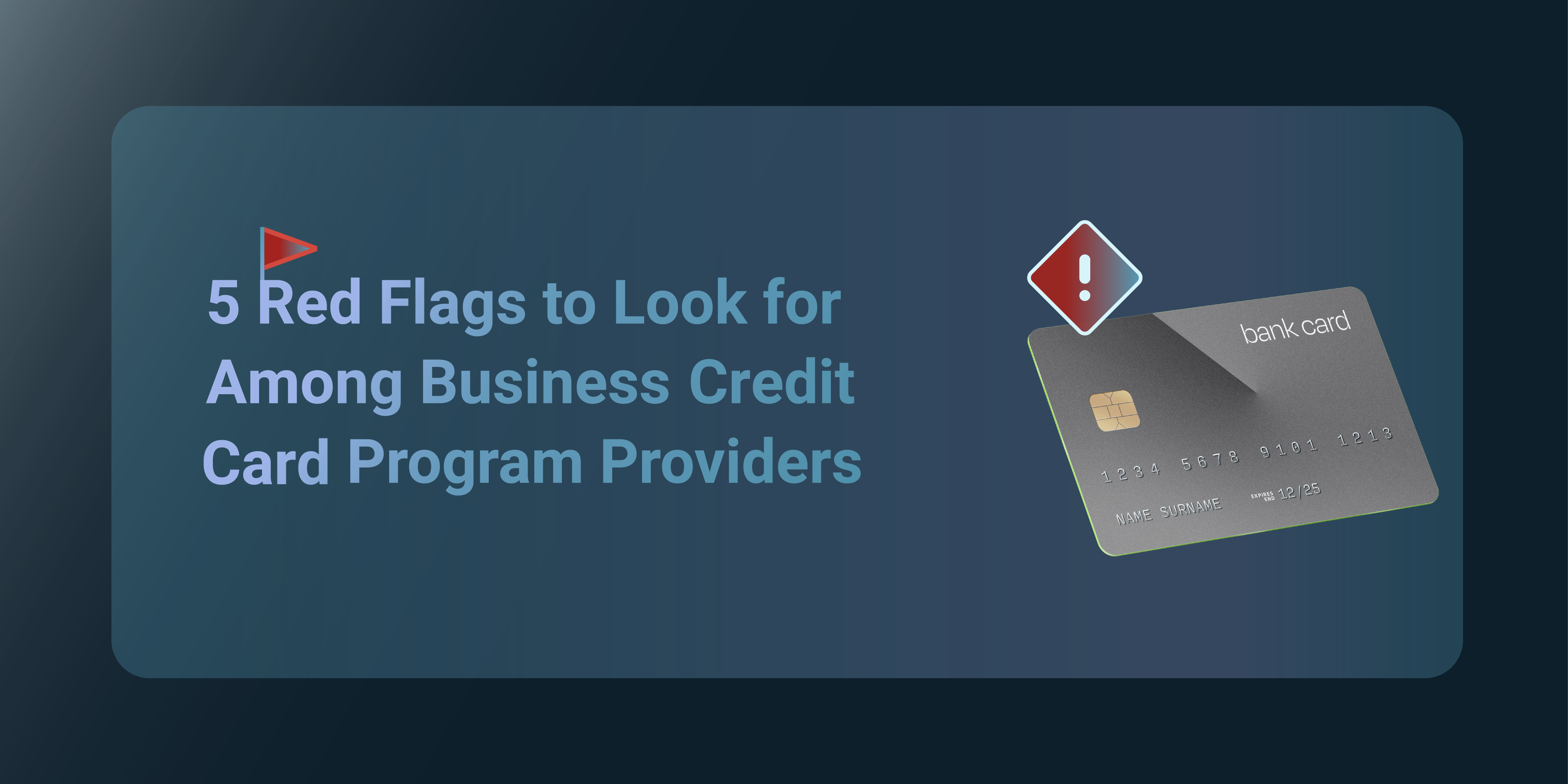5 Red Flags to Look for Among Business Credit Card Program Providers
Given the costs and challenges of setting up, maintaining, and upgrading business credit card programs, community banks and credit unions often turn to third-party program providers for help. These providers take on most of the responsibilities for managing the credit card program for their client, largely taking responsibility for handling the backend infrastructure. At the same time, the financial institution focuses on customer acquisition and risk management.
However, as with any other service provider, the quality of programs can vary widely and some fall well short of what business customers look for or what a community bank needs to properly serve their customers. When it comes to evaluating business credit card program provider offerings, here are five red flags to look out for:
Lack of program customization
Each institution is unique and has different needs and goals regarding its business credit offerings. A program aspect that one community bank wants to “own” and handle in-house may be one that a credit union wants to “delegate” to the provider. That’s why it’s important to find a provider that is flexible when it comes to what services are included in their program offering. Institutions with robust customer service operations are unlikely to be interested in outsourcing support, for example, while those with limited experience underwriting business credit cards may want to rely on their partner for that expertise.
Additionally, the visual experience should be fully customizable to match your institution's branding – particularly the customer-facing elements such as physical cards, communications (physical mail and email alike), and online card management portals.
A program provider that does not offer a deep level of program customization may be difficult to work with, cause you to spend more than necessary, and limit the effectiveness of your brand-building and customer acquisition efforts.
Lack of card functionality
The old days where card functionality meant “it swipes” are long gone. Today's customers expect their cards to function with tap-to-pay, support digital wallets, and be easy to use for online purchasing – with business clients often expecting the ability to easily add and manage virtual and physical cards.
Building the technical infrastructure needed to support all these functions can be complex and time-consuming – and this is one of the areas where a program provider can add the most value. Because of the importance to business customers that cards are easy to manage and easy to use, a program provider that doesn't support these needs will not be an effective partner to work with.
Outdated user interface
Banks cater to a diverse user base, including people with varying levels of technological proficiency. Designing a UI that is user-friendly, intuitive, and accessible to all customers – and for business clients, in all roles – can be a struggle. This is further complicated by the need to ensure compatibility with different devices, screen sizes, and assistive technologies.
Banks often struggle with UI design since it's a discipline that they have limited experience with. Additionally, user expectations of digital experiences change rapidly and are influenced by trends in the broader digital landscape. Banks need to keep up to continually provide what customers see as a modern, visually appealing, and intuitive UI.
High-quality program providers are aware of these challenges and include modern web and app experience as part of their offerings. In addition to avoiding design pains, being able to use off-the-shelf interfaces means a shorter go-to-market time. Be sure to carefully examine the digital experience offered by a prospective program provider and ask them about how they approach design and how often they release updates.
Limited data
Data is a critical resource for banks to serve customers effectively.
Community banks and credit unions, by virtue of their smaller customer bases, typically have far less data to work with, which is why it's important for them to work with a credit card program provider that is able to capture and share robust transaction datasets that can be leveraged for predictive analytics purposes.
If a potential partner is unable (or unwilling) to share transaction data with you with the granularity you desire – or if their infrastructure doesn't provide an easy way to access that data in real-time – you should consider looking elsewhere.
In addition, look for a partner that can leverage alternative datasets that provide additional insights into customer habits that may not be available otherwise.
Lacking support
Delivering a seamless and positive customer experience is crucial for the success of any credit card program. That's why choosing a program provider with strong support teams and processes is important. Whether it's training materials for your in-house support team for the credit card portal or technical support for IT teams, it’s crucial to have access to personnel and documentation needed to resolve problems quickly.
If a bank or credit union cannot quickly resolve a business customer’s problem – or at least provide a reasonable explanation, it can cause that customer to leave and even damage the institution’s reputation. Likewise, if there’s a technical problem and your IT team can’t reach a technical counterpart at the program provider in a reasonable amount of time, that could end up being a critical business issue.
Why Choose Powered By
With Torpago, we’ve already addressed these potential issues, designing our fully customizable Powered By program with the needs of business customers in mind. Fully white-labeled, Powered By allows banks to choose only the modules needed to get a program running with support for all of today’s modern payment needs and paired with a modern interface. All of our transaction data, including L2 and L3 data, is available via API endpoints and presentation can be custom-tailored to your needs. Request a demo today to learn more!


